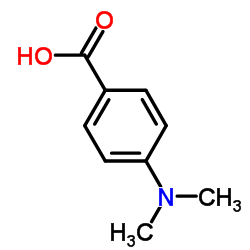| Structure | Name/CAS No. | Articles |
|---|---|---|
 |
4,N,N-Trimethylaniline
CAS:99-97-8 |
|
 |
4-(Dimethylamino)benzoic acid
CAS:619-84-1 |